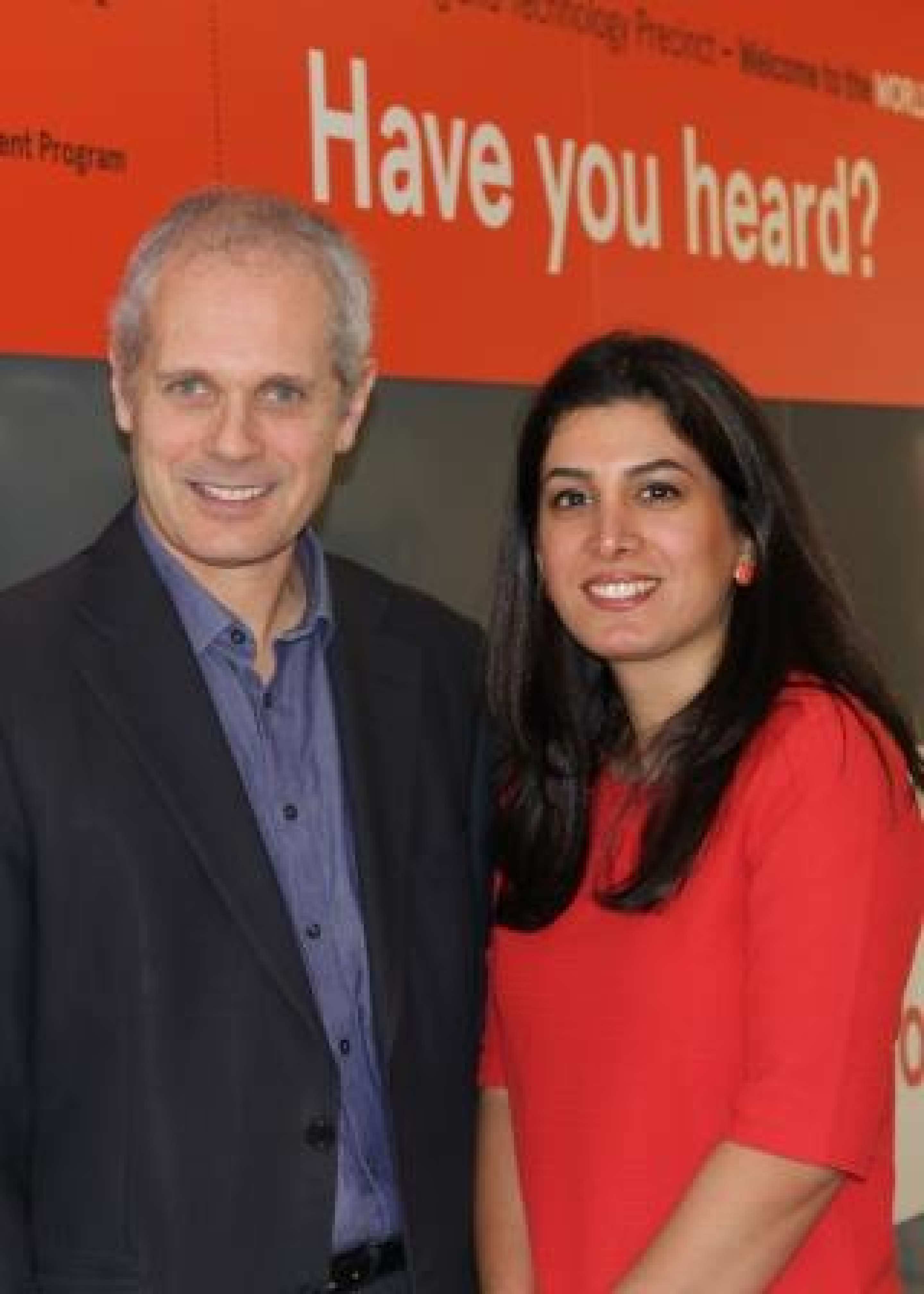Snoring deathly boring
Sleep disorders are no laughing matter according to Nadi Sadr Lahijany, whose humorous three-minute thesis presentation on sleep apnoea diagnosis won her the University of Sydney's 2015 Research Bites competition.

A PhD candidate in the University’s School of Electrical and Information Engineering, Nadi explained how, left undiagnosed, sleep disorders can lead to cardiac disorders, heart failure and strokes.
Her PhD research aims a simpler way of diagnosing the disorders, including sleep apnoea, while patients are in their own beds.
“I want to reduce the number of sensors required when monitoring a person’s sleep replacing them with a simple wireless fingertip clip, to measure blood oxygen levels, and three coin sized sensors on the chest for heart rate,” she told the audience.
“The novelty in my PhD will be developing mathematical methods to combine the partial information of these individual sensors to provide a complete picture of sleep. It is also to obtain a method to diagnose different types of apnoea including mild, moderate and severe apnoea, hypopnoea and central
apnoea by minimally invasive sensors.
“I also want to detect sleep stages to obtain an accurate measure of Total Sleep Time, which is not considered in the current home-based sleep tests.”
With as many as 80 percent of cases never diagnosed the health and financial consequences are enormous, said Nadi when outlining the motivation for her research.
“I was lying in my bed with the terrifying sound of someone gasping and choking next to me.
“I realised the source of the sound was my husband! The most shocking part was that after he stopped breathing and almost dying next to me, he then resumed breathing and sleeping as usual. This occurred almost every night. In the mornings, he had no recollection of these events.”
Nadi’s husband required expensive and invasive hospital sleep tests. The experience left her wondering about a simpler way to diagnose sleep disorders.
“There are a number of home-based sleep tests, including some smart phone apps. But there is no test with minimal interference on sleep accurate enough to avoid a follow-up hospital test.”
The set-up she is designing would be easily used at home and reduce the cost and waiting time significantly.
“I aim to eliminate the need for hospital visits,” she said.
Professor Philip de Chazal, Resmed Chair of Biomedical Engineering and Nadi’s PhD supervisor said the current gold standard method of sleep study relies on laboratory-based polysomnography (PSG). While PSGs makes it possible to capture high-quality physiological measurements such as heart rate, brain activity, breathing effort, air flow, and blood oxygen level they are restrictive due to cost, limited number of hospital beds and the limited number of specialists that read the data.
“Sleeping in an unfamiliar environment can lead to different sleep patterns from ‘true’ ones,” he said.
“Besides, it is unsuited to collection of data over more than one or two nights generally due to both cost and comfort issues for the patient.”
Nadi will present her research at the upcoming Computing in Cardiology Conference to be held at Saint Jean d’Angely Campus (SJA) – University of Nice, France from 6th-9th September.
She will also represent the University at the National Three Minute Thesis competition held in Queensland in October.
Related articles
Study explains elastin's remarkable movements
New research likens the flexibility of elastin in a blood vessel to the dynamics of a ballet.
Human 'shock absorbers' discovered
Sydney excels in national research engagement and impact assessment
Sydney researchers secure $38 million in NHMRC funding
Cannabis treatment counters addiction: first study of its kind
$2.3 million to support industry partnerships for 21 projects
Twenty-one projects have been awarded funding under the University's industry and community engagement seed fund.
Incredible gift means a cure is in sight
Most of us walk through life never having to think about the fact that we can see clearly. But for many Australians, loss of vision is a real problem - and it can be especially scary when it comes out of the blue.
4 reasons why food is more important than you think
Access to food is a basic human right, vital for good health and ultimately for life itself. But how often do you wonder where your next meal is coming from, who's growing it, and whether it's actually good for you?